Doñana Parque Nacional, on the west coast of Andalucia, Spain, is one of the most important wetlands in Europe and a UNESCO World Heritage Site.
By Nick Nutter | Updated 11 Apr 2023 | Huelva | Parks |
Login to add to YOUR Favourites or Read Later
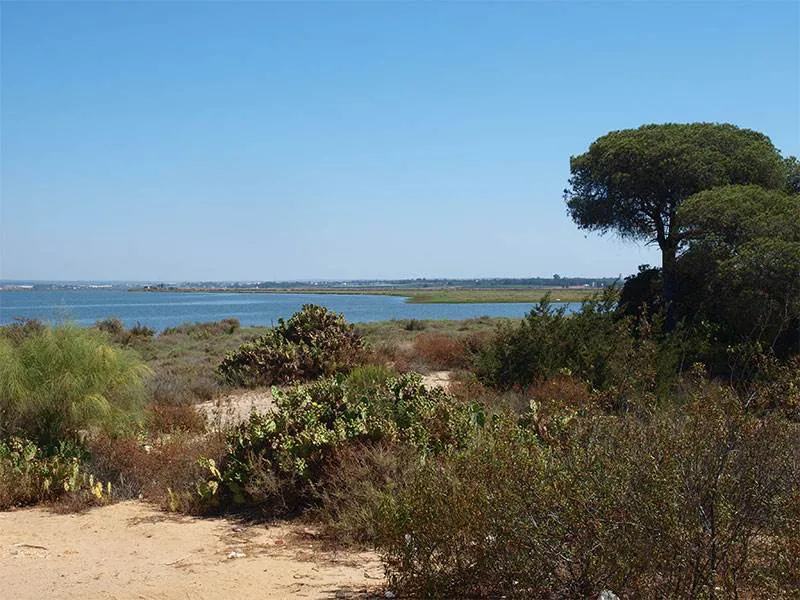
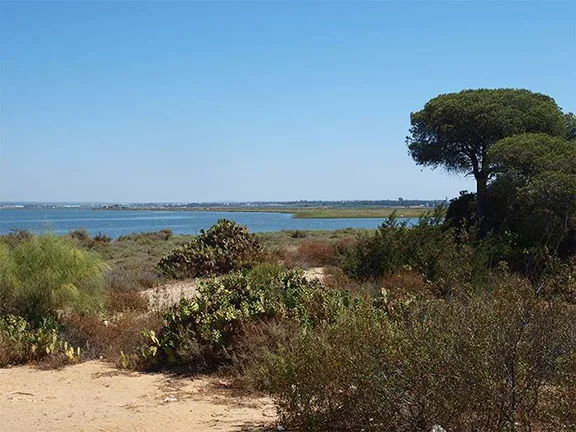
Coastal Donana
Doñana is a complex mosaic of landscapes forming a paradise for birds in the most important wetlands in Europe. Situated between the provinces of Huelva, Seville and Cádiz, Doñana is now a labyrinth of land and water that shapes the marshes, spectacular lakes and channels, reserves and pine forests, streams and banks, dunes, beaches and cliffs. Bonanza, Gallega, Ribetehilos and El Lucio del Cangrejo are good examples of the lagoons that dominate this area, providing shelter for thousands of birds.
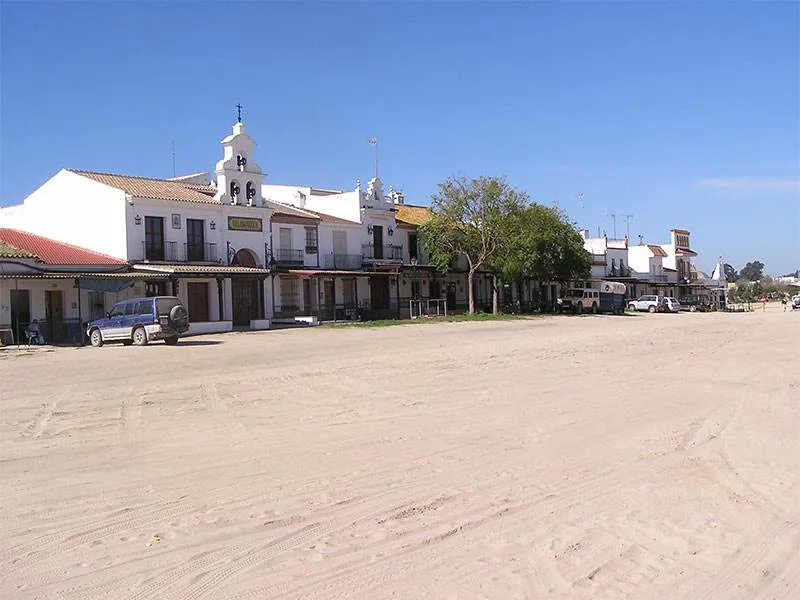
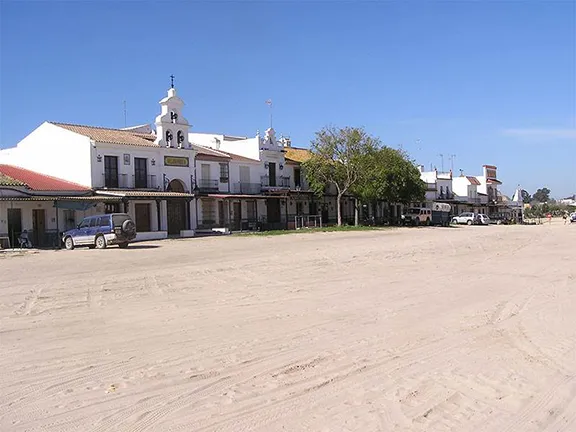
El Rocio town
The Parque Nacional de Doñana is a vast area of coastal beaches, sand dunes, forests and freshwater marshes on the west bank of the mighty Rio Guadalquivir. It is the most important wetland in Spain and one of Western Europe’s prime birdwatching locations. It is also poorly mapped and bisected by tracks that are known only to locals with sparse habitation and villages over 20 kilometres apart. It is a fascinating place for a day out, particularly in the spring and autumn.
Among the varied landscapes that form part of Doñana are the moving dune systems that run between Matalascañas and the mouth of the Guadalquivir, over 25 kilometres of unspoilt beach and white sand. Or the 30 metres tall fossil dunes of the Asperillo, and, on the beach, the cliffs with the same name, made of orange and ochre sandstone due to the rich iron oxide waters that flow through the chorritos.
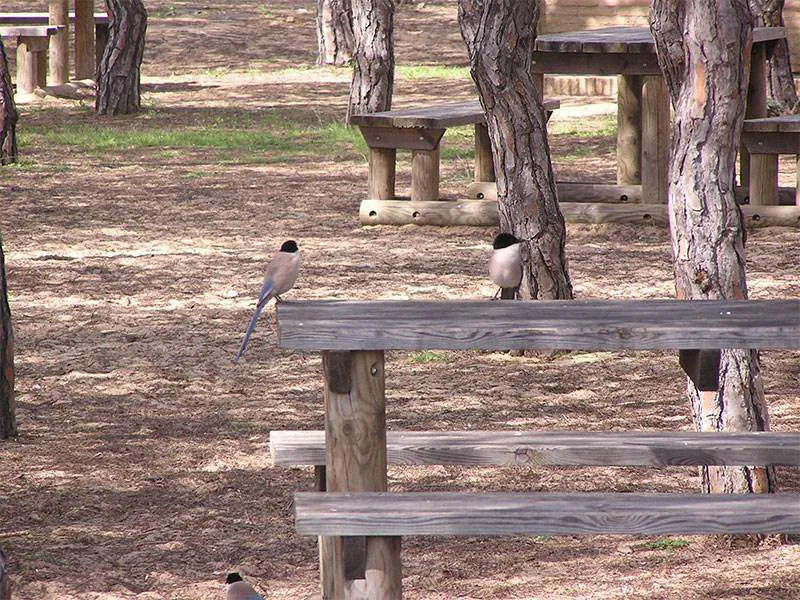
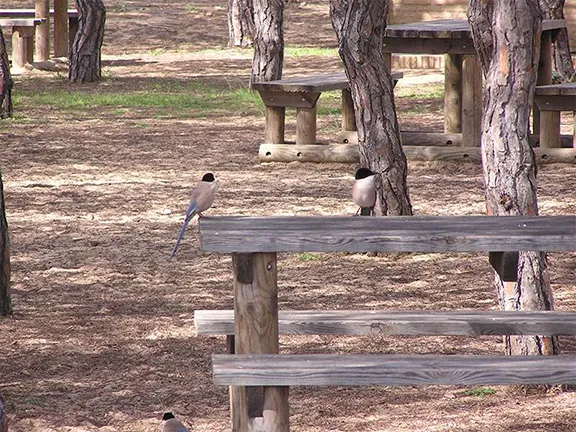
Azure winged magpies Acebuche
The lagoons are dominated by plants adapted to this habitat, such as reeds and rush. Further inland you will find other species more related to banks and river channels. Cork trees grow alongside strawberry plants and palm trees. The blood-red willow, an endemic of the Tertiary period, makes up amazing forests next to the royal fern, ash, white poplar, sarsaparillas and honeysuckle. The combination of very different ecosystems is the main reason that Doñana is a true paradise for birds. It has over 120 species.
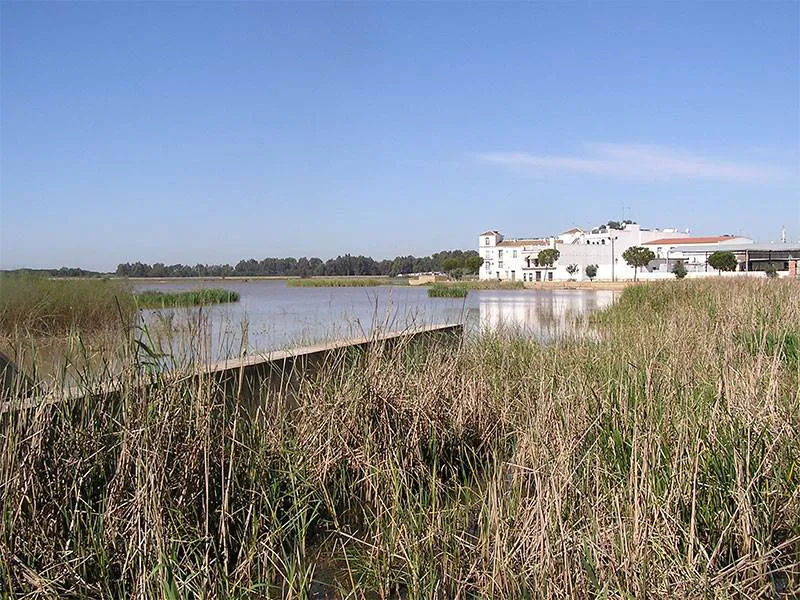
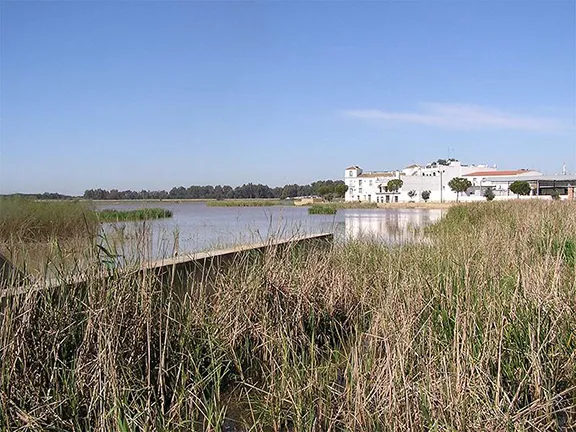
El Rocia marismas
The humid, fertile, lower ground gives way to higher and dryer land. Magnificent forests of stone pine, such as Coto del Rey, El Abalario or the Pinar de La Algaida, share their habitat with the black mountains - myrtle, mastic, Moorish rock rose, rosemary, thyme, lavender, and the white and yellow rock roses. This is where two of the most valued species live, the Iberian lynx and the Imperial eagle, as well as other mammals, reptiles and birds.
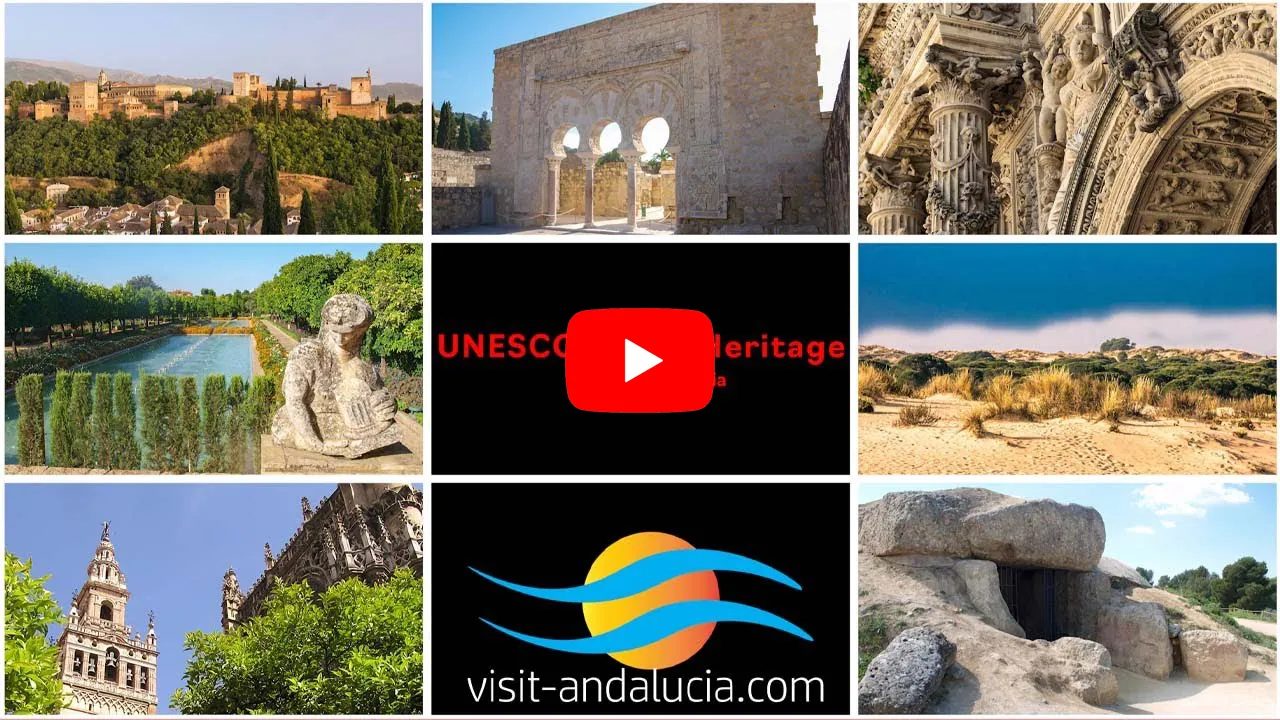
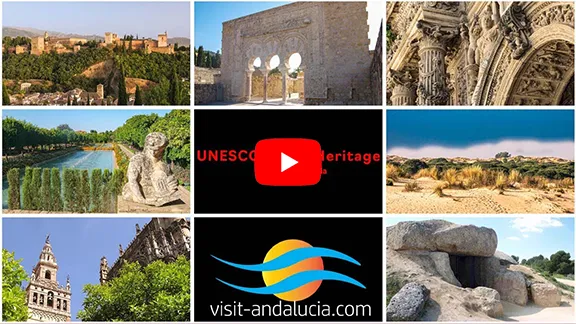
Video By: Julie Evans
Stabilizing the coastal dunes are plants that can handle a dryer and windier atmosphere, with the sand and salt, which include juniper, savins and marram grass.
The extensive network of trails is an excellent way to discover this protected area, either from horse back, hiking or by bike. These allow you to access excellent riverbank forests along the Acebrón path, bird watch following the route of La Rocina, which has observatories for this purpose, or follow pleasant cycling routes, such as the one that crosses the Matalascañas and another that starts in the forest village of Cabazudos. Meanwhile, birdwatching possibilities, with or without a guide, are outstanding.
Its statistics confound the brain. The central national park covers an area of 54,252 hectares. This area is only accessible if you pay for an official guided tour that, quite frankly, takes four hours to whisk you round, allowing little time to appreciate the birds and animals found there. The ‘buffer zone’ surrounding the national park consists of 84,200 hectares of natural park and agricultural land with a further 1,362 hectares on the east bank of the river round the Isla Menor. This area is open to the public. Properly known as the Marismas de Guadalquivir the national and natural parks are home to 378 species of birds, together numbering over 8 million, of which 136 breed regularly, augmented by a further 1,200,000 birds that overwinter. Mammals are represented by the almost extinct pardel lynx, red and fallow deer, wild boar, mongoose, otters and many others. There are 21 recorded species of reptile and 11 amphibians including the rare spur-thighed tortoise. The flora list is similarly extensive.
Even the way the Doñana came to be is unusual. At the end of the last glaciation, rising sea levels deposited river borne sediment in the former river estuary which isolated the area from the sea. The river then dug its own channel through the sediment that combined with falling sea levels until the area became unaffected by the tide. The wetlands are now sustained by rainfall and often, during the summer, dry up forcing the birds out of the marshes and into surrounding ricefields, which are constantly kept under a few cms of water during the growing season. The fertile ground today produces fruit and vegetables, rice and cotton. Even man’s activity helps sustain the flora and fauna.
Rice was first introduced to the Doñana region in 1970, when a local farmer decided to drain and level a small part of the natural marsh and attempt to grow the crop. The idea worked and more and more marshland was reclaimed and converted into rice fields. At the time there was great concern shown by some conservationists that the draining of the marshes would have an adverse effect on the birds and other wildlife, but in fact, the outcome was completely different to that which was forecast. Successful rice growing relies on the roots being permanently submerged under a few centimetres of water throughout the growing process. This created new “wetlands” and the birds, which beforehand were forced to leave the Doñana region during the dry, hot summer in search of suitable wetland feeding areas now moved into the rice fields, attracted not only by the grain, but also by the rich and abundant food supply of frogs, fish, eels, insects, worms, grubs and larvae that lived in the fields.
If the rice growing season sustains the birds throughout the summer, then the harvesting time supplies them with a magnificent banquet. The harvesting, which commences in late September and can last through to early December, is carried out by combine harvesters that cut the top of the stems that hold the grain and leave about 30 cms of stalk still standing. A few days after the rice has been cut, the remaining stalks in the still flooded fields are then ploughed back into the mud to add nutrients to the soil for the next growing season. The specially adapted tractors that perform this task are fitted with very wide rear wheels made of slatted metal and as they carry out the ploughing process they are also churning up the fish, eels, frogs, newts, crayfish, insects, grubs and larvae by the millions. Many bird species are attracted to the fields by the rich soup that is being churned up and it is not unusual to find 10 – 15,000 birds in one field, fighting for the choicest morsels.
In 1974, in an effort to maximize the profit he could gain from his land, a local farmer decided to import 200 kilograms of live Red Swamp Crayfish (Procambarus clarkii) from America and introduce them into the rice fields. Some people say that his idea was that he would have a constant supply of the basic ingredients for paella, ie. rice and shellfish. Others subscribe to the idea that he was a shrewd businessman and was supplying local bars and restaurants with constantly fresh crayfish. Whatever the reason, this was also a success and nowadays thousands of tonnes of crayfish are harvested annually. However, there is always a price to pay for introducing “foreigners” into any area and these larger, more aggressive creatures resulted in the loss of the indigenous crayfish species (Austropotamobius pallipes).
Even Marks and Spencer’ benefit from the Doñana. They rent a large tract of land on which they grow potatoes for retail through their stores.
In 1998 a less beneficial occurrence was the unintentional polluting of the Rio Guadiamar that feeds into the Guadalquivir with water containing heavy metals that poisoned the land around. The Junta de Andalucia bought the polluted ground from the local farmers and stripped out the food crops replacing them with plants like the willow that will tolerate and eventually clean up the soil. This strip is known as the Corredor Verde del Río Guadiamar and is now an extremely important part of the food chain.
The Doñana National Park was inscribed by UNESCO as a world heritage natural site in 1994. The area inscribed was increased in 2005.
Doñana National Park in Andalusia occupies the right bank of the Guadalquivir river at its estuary on the Atlantic Ocean. It is notable for the great diversity of its biotopes, especially lagoons, marshlands, fixed and mobile dunes, scrub woodland and maquis. It is home to five threatened bird species. It is one of the largest heronries in the Mediterranean region and is the wintering site for more than 500,000 water fowl each year.